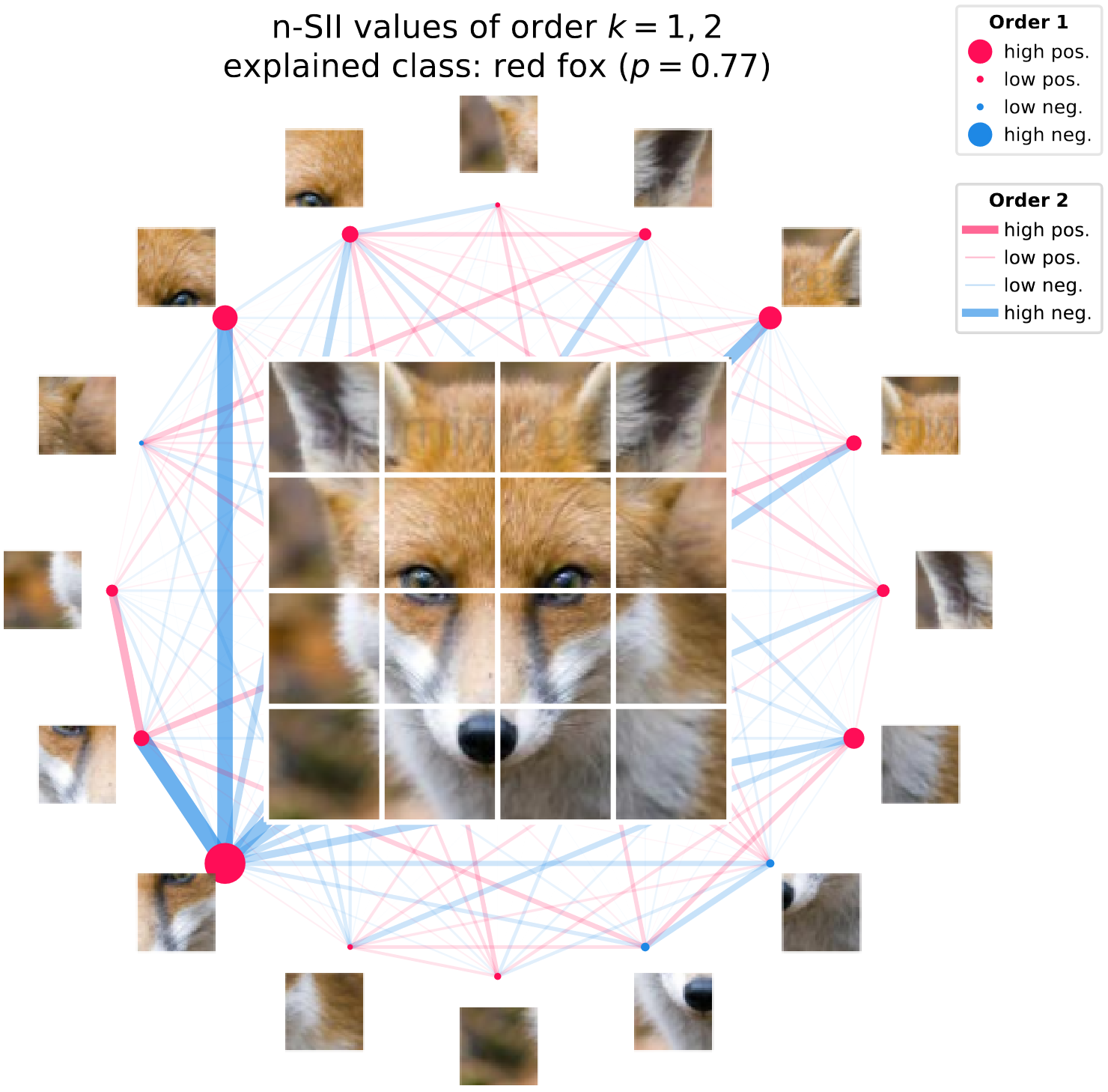An interaction may speak more than a thousand main effects.
Shapley Interaction Quantification (shapiq) is a Python package for (1) approximating any-order Shapley interactions, (2) benchmarking game-theoretical algorithms for machine learning, (3) explaining feature interactions of model predictions. shapiq extends the well-known shap package for both researchers working on game theory in machine learning, as well as the end-users explaining models. SHAP-IQ extends individual Shapley values by quantifying the synergy effect between entities (aka players in the jargon of game theory) like explanatory features, data points, or weak learners in ensemble models. Synergies between players give a more comprehensive view of machine learning models.
shapiq is intended to work with Python 3.9 and above. Installation can be done via pip:
pip install shapiqYou can explain a model with shapiq.explainer and visualize Shapley interactions with shapiq.plot.
If you are interested in the underlying game theoretic algorithms, then check out the shapiq.approximator and shapiq.games modules.
Explain your models with Shapley interaction values like the k-SII values:
import shapiq
# load data
X, y = shapiq.load_california_housing(to_numpy=True)
# train a model
from sklearn.ensemble import RandomForestRegressor
model = RandomForestRegressor()
model.fit(X, y)
# set up an explainer with k-SII interaction values up to order 4
explainer = shapiq.TabularExplainer(
model=model,
data=X,
index="k-SII",
max_order=4
)
# explain the model's prediction for the first sample
interaction_values = explainer.explain(X[0], budget=256)
# analyse interaction values
print(interaction_values)
>> InteractionValues(
>> index=k-SII, max_order=4, min_order=0, estimated=False,
>> estimation_budget=256, n_players=8, baseline_value=2.07282292,
>> Top 10 interactions:
>> (0,): 1.696969079 # attribution of feature 0
>> (0, 5): 0.4847876
>> (0, 1): 0.4494288 # interaction between features 0 & 1
>> (0, 6): 0.4477677
>> (1, 5): 0.3750034
>> (4, 5): 0.3468325
>> (0, 3, 6): -0.320 # interaction between features 0 & 3 & 6
>> (2, 3, 6): -0.329
>> (0, 1, 5): -0.363
>> (6,): -0.56358890
>> )A handy way of visualizing interaction scores up to order 2 are network plots. You can see an example of such a plot below. The nodes represent feature attributions and the edges represent the interactions between features. The strength and size of the nodes and edges are proportional to the absolute value of attributions and interactions, respectively.
shapiq.network_plot(
first_order_values=interaction_values.get_n_order_values(1),
second_order_values=interaction_values.get_n_order_values(2)
)
# or use
interaction_values.plot_network()The pseudo-code above can produce the following plot (here also an image is added):
The documentation for shapiq can be found here.
If you enjoy shapiq consider starring ⭐ the repository. If you really enjoy the package or it has been useful to you, and you would like to cite it in a scientific publication, please refer to our paper:
@inproceedings{shapiq,
title = {{SHAP-IQ}: Unified approximation of any-order Shapley interactions},
author = {Fabian Fumagalli and
Maximilian Muschalik and
Patrick Kolpaczki and
Eyke H{\"{u}}llermeier and
Barbara Hammer},
booktitle = {NeurIPS},
year = {2023}
}




